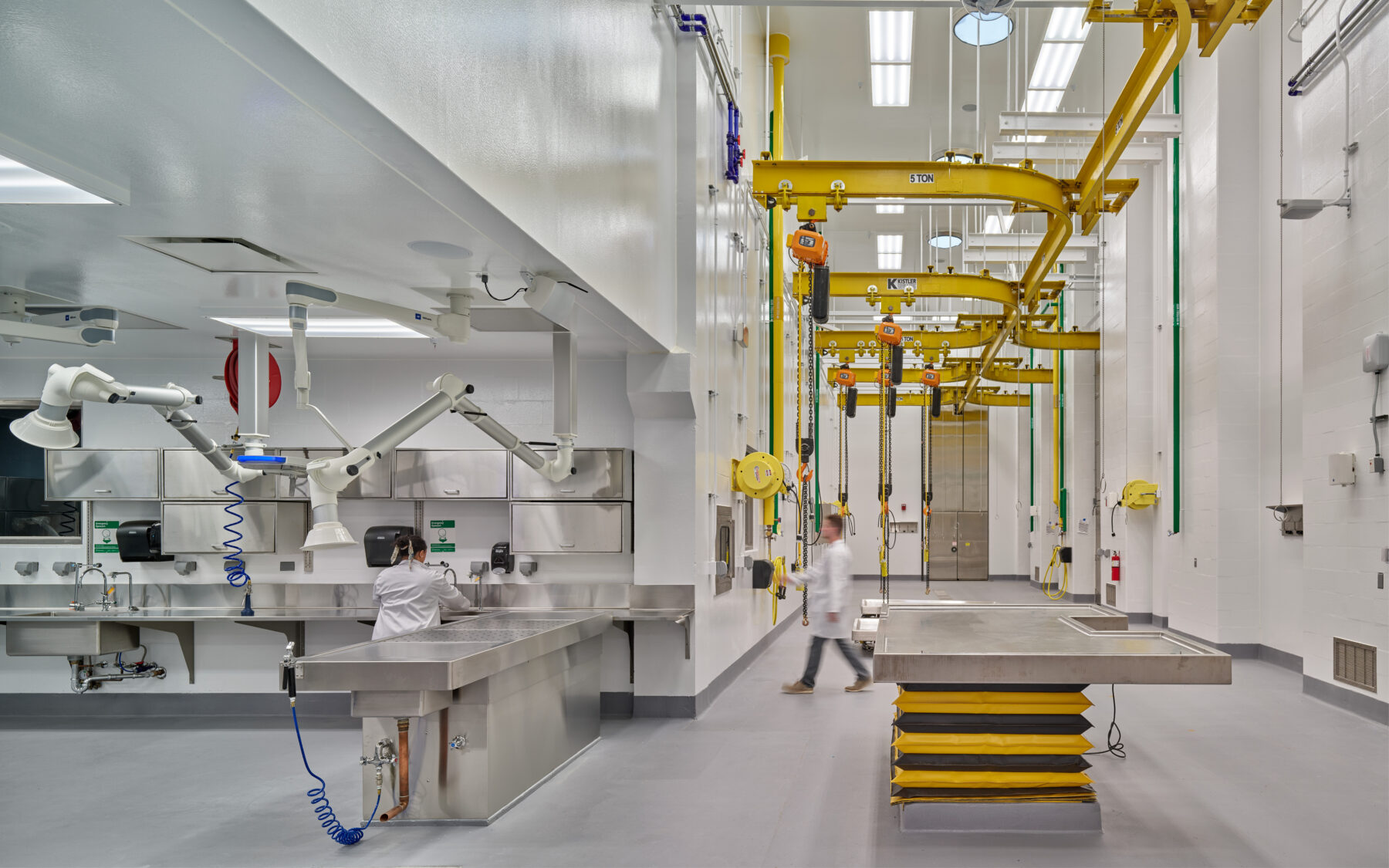
The Iowa State University Veterinary Diagnostic Laboratory (VDL) is a cutting-edge facility designed to advance veterinary diagnostics while adhering to the highest standards of biosafety, biosecurity, flexibility, and sustainability. As the first phase in a multi-stage construction project, the VDL is engineered to meet evolving research needs, incorporate innovative technologies, and ensure a safe, efficient environment for its users. This facility not only addresses critical challenges in laboratory design but also sets a new benchmark for modern, responsible design in the field of veterinary diagnostics.
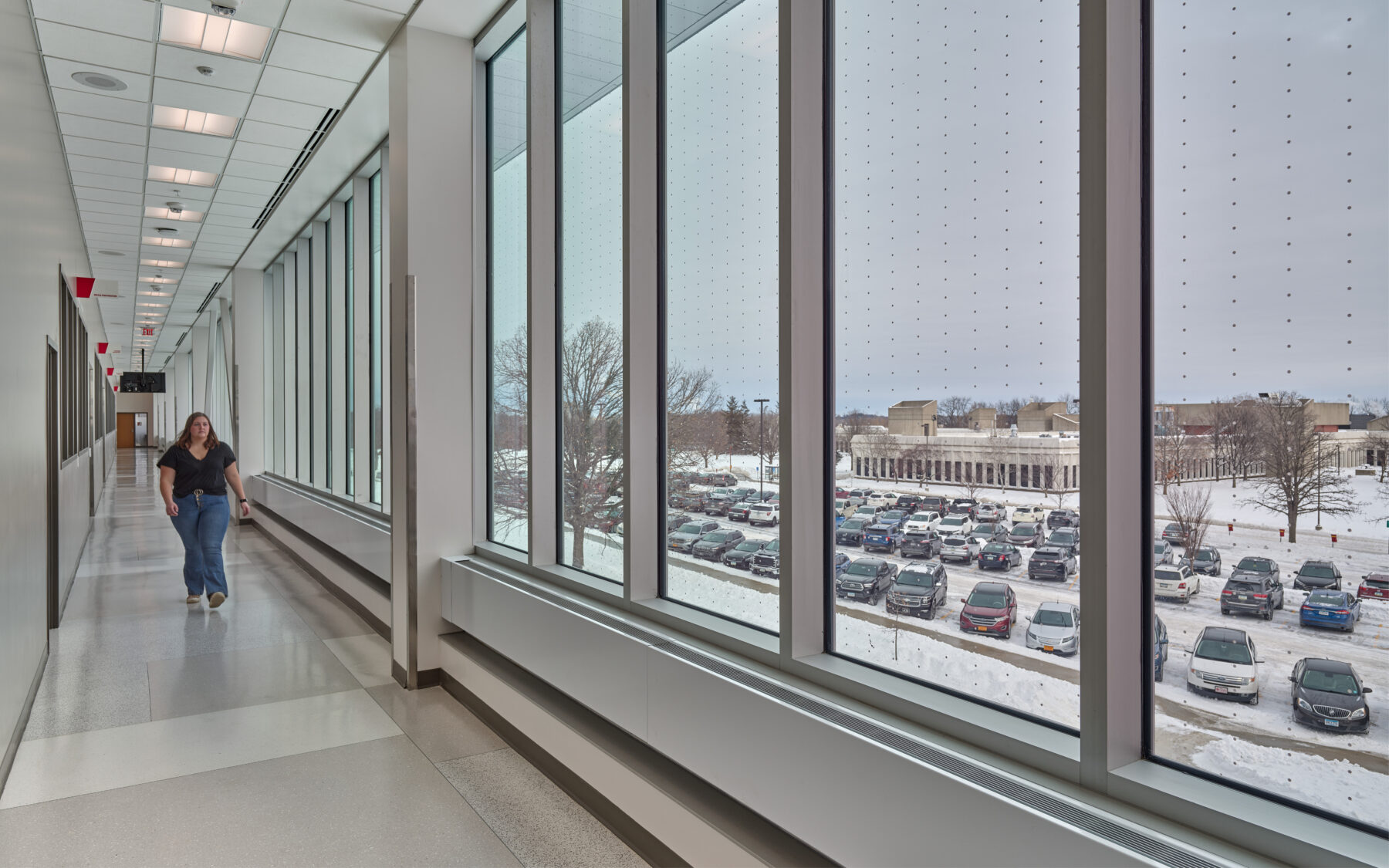
Biosafety and Biosecurity
The facility is designed to meet the highest standards of biosafety and biosecurity. Unlike older facilities that often fail to properly separate clean and dirty lab spaces, the new VDL features a clear demarcation between laboratory and non-laboratory areas. This separation ensures that lab activities, which handle potentially hazardous materials, are kept distinct from areas where offices and public spaces occur. The racetrack corridor encircling the facility provides a secure public pathway for visitors to navigate the building without accessing lab spaces, further enhancing biosecurity by preventing unauthorized entry into sensitive areas. Inside the labs, safety features such as emergency showers, eyewashes, and spill kits are strategically placed to support emergency protocols. Hand wash sinks and protective equipment near lab entrances reinforce proper procedures, while a minimum five-foot center aisle ensures safe circulation. These design elements collectively uphold stringent biosafety and biosecurity standards, protecting both people and laboratory operations.
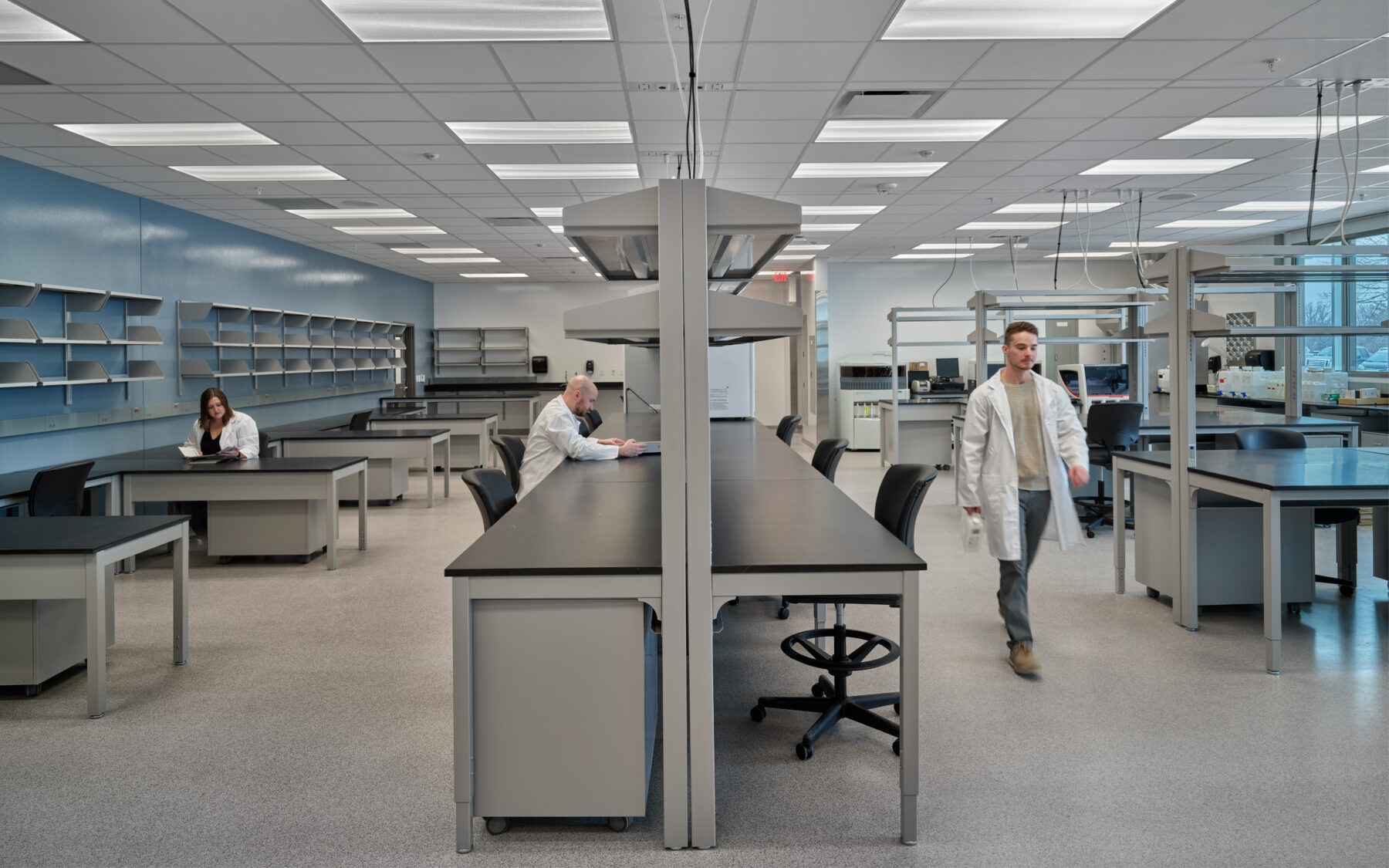
Flexibility and Functionality
Lab spaces are designed with flexibility to adapt to evolving research needs and technological advancements. The facility utilizes a two-dimensional laboratory planning module, allowing for easy reconfiguration of lab benches and equipment while maintaining safe aisle clearances. This approach reduces the need for costly renovations. The open lab concept further enhances flexibility by minimizing constraints from fixed walls and doors, resulting in versatile, open spaces. Movable lab benches with overhead utility connections enable reconfiguration, while fixed elements like sinks and fume hoods are placed around the perimeter. This design ensures the VDL can support current and future veterinary diagnostic needs with ease.
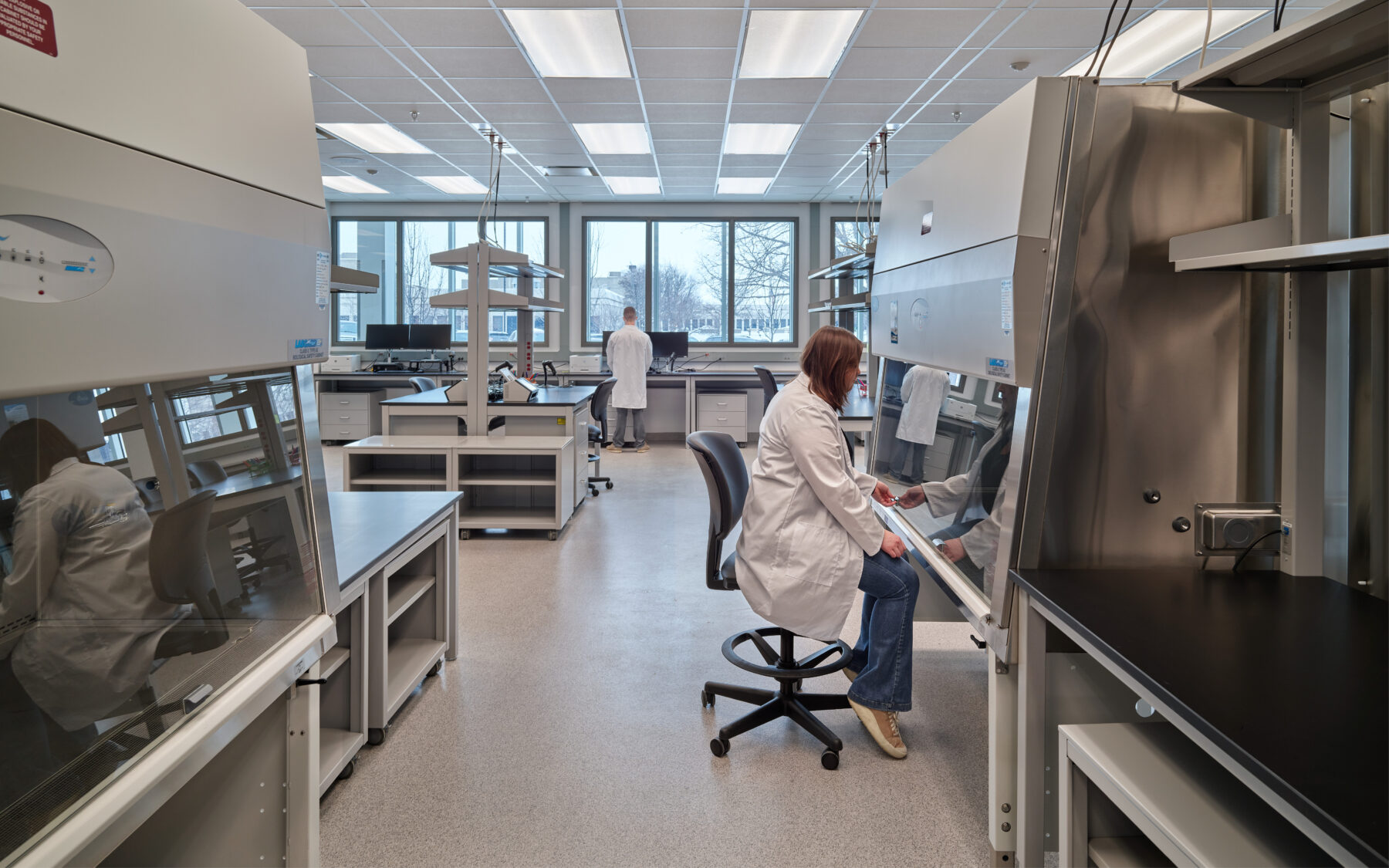
Sustainability
Sustainability was a key focus in the VDL’s design, particularly due to the energy demands of maintaining air quality in hazardous chemical labs. The facility’s energy-efficient design achieves a 30% reduction in energy use, saving over $195,000 annually. The site is landscaped with native and adapted plants, eliminating the need for irrigation and reducing potable water use by 38.8%. These measures ensure the VDL exceeds contemporary sustainability standards.
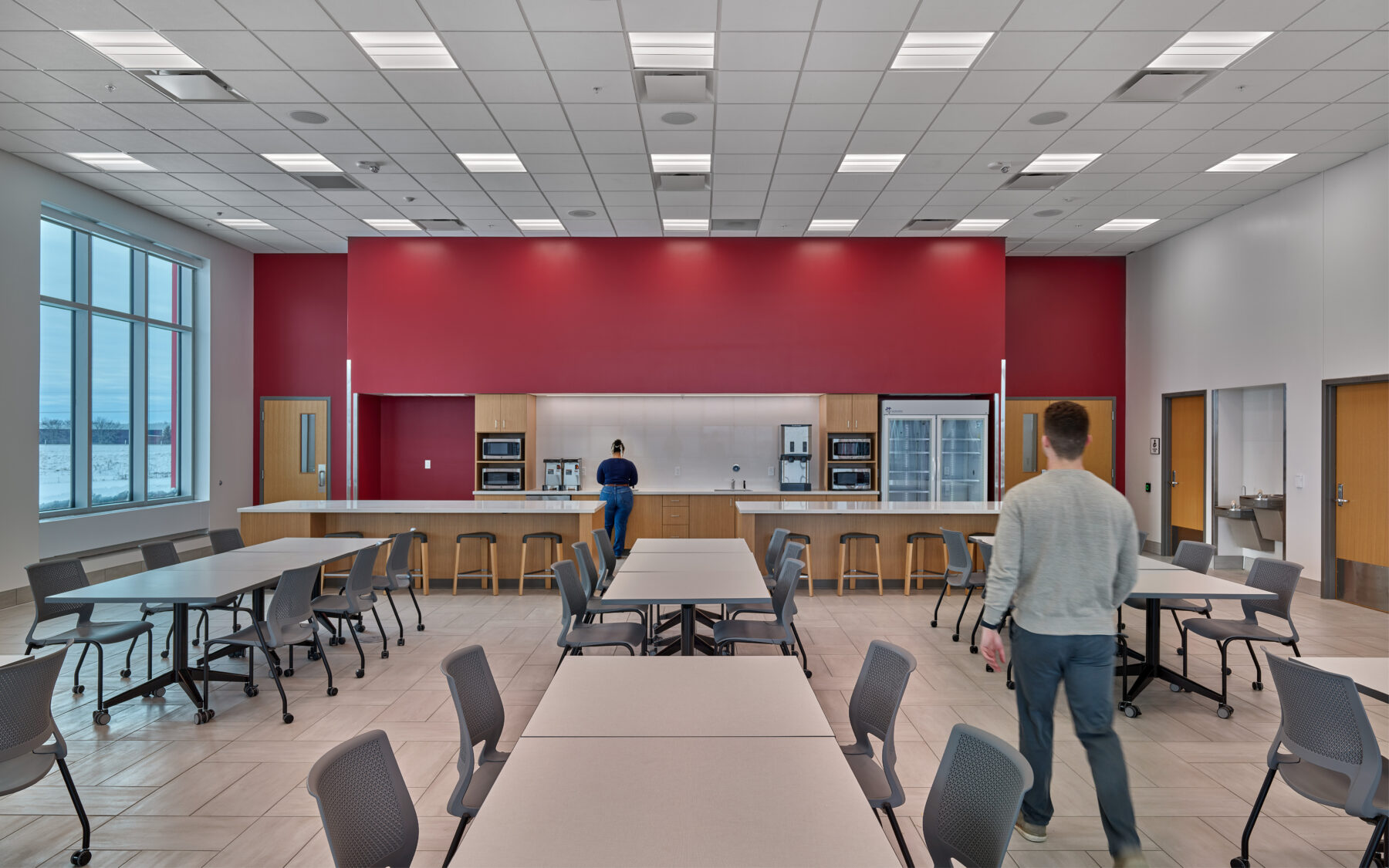
Occupant Comfort and Well-Being
The well-being of occupants is prioritized by allowing access to natural daylight and visual connections between lab functions. Break areas and amenities for food and water outside the lab support physical and mental well-being. The building’s air distribution systems use 100% outside air and variable volume controls to maintain safe and comfortable indoor conditions, with proper airflow maintained from lower to higher hazard areas.
The Iowa State University Veterinary Diagnostic Laboratory exemplifies a forward-thinking approach to laboratory design, balancing rigorous biosafety and biosecurity measures with flexibility, sustainability, and occupant well-being. By integrating advanced safety features, adaptable space configurations, and energy-efficient systems, the VDL stands as a model for future veterinary diagnostic facilities. Its commitment to creating a safe, functional, and environmentally responsible space underscores its role in advancing veterinary research and supporting the health and success of its users while minimizing its ecological footprint.